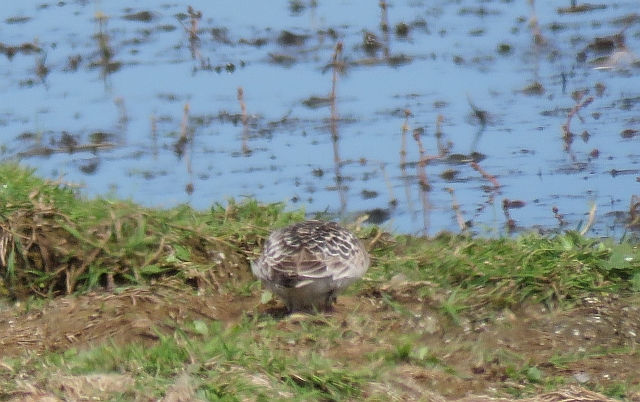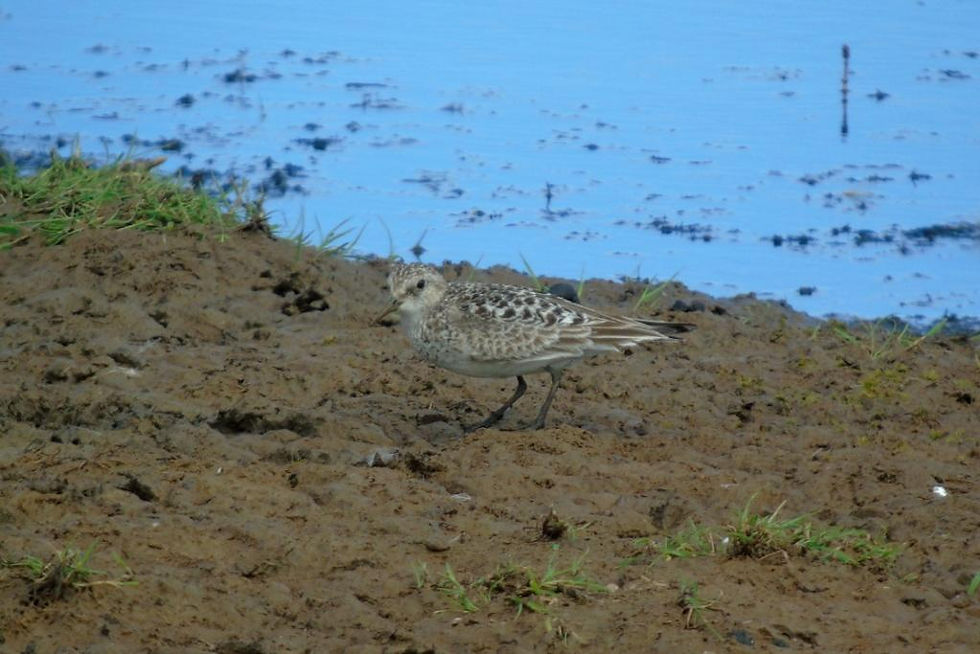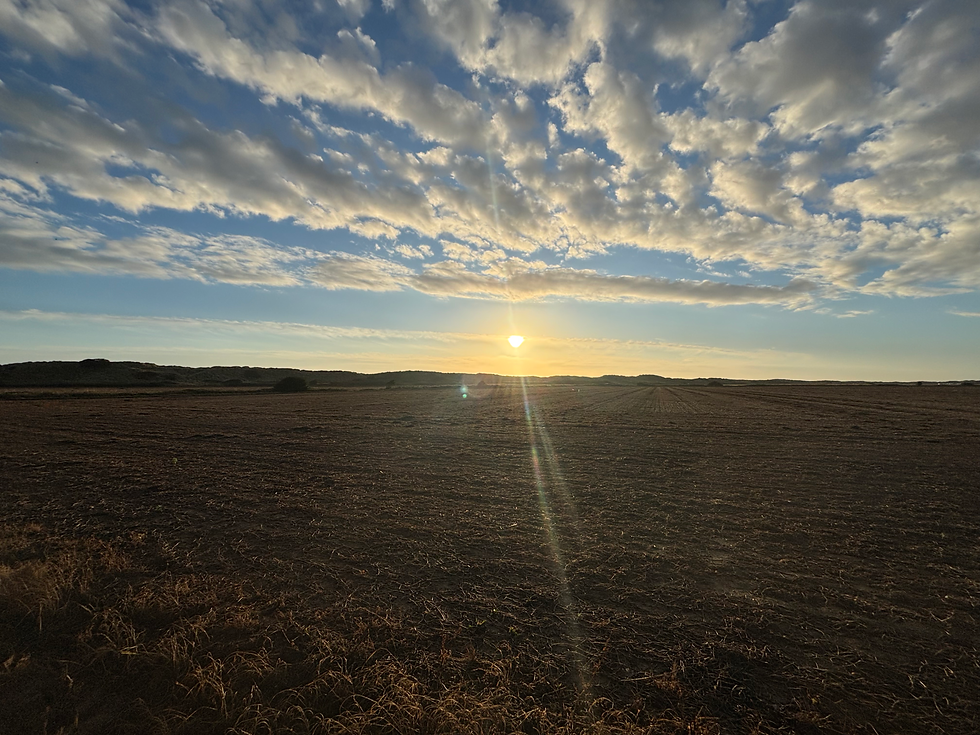Fresh eyes and a 'tricky'? sandpiper...
- tg42lowcarbonbirding
- Aug 1
- 3 min read
Andy Kane and I decided to have a look around Potter Heigham Marshes on the morning of Saturday Aug 5th. A Temminck’s Stint had been reported on Weds Aug 2nd, and there was always the chance of a surprise or two. As we parked up on the sharp bend we bumped into Pat Goffin from Winterton. Pat informed us that the Temminck’s Stint was still present on the westernmost pool. However, we decided to walk the “other” way around towards the east and look for other birds before ending up in the area where the stint was. We had a fairly uneventful walk, with few waders being seen at all. We arrived at the western boundary of the pools and walked north alongside them towards the main access track.
After 30 yards or so we came across a small group of Dunlin and had brief views of a smaller wader. It clearly wasn’t a Temminck’s Stint and Andy quickly stated that it had to be a Baird’s - in a pretty impressive piece of field birding - being long and drawn out but without a clear white rump patch in a brief flight view. As usual in these situations we were very excited but also very sure to remain calm and watch the bird closely in order to rule out any possible confusion species. We spent the next hour watching the bird in lovely sunshine and at quite close range (10-30m) noting as much detail as possible and taking several photographs. The bird was indeed an adult breeding-plumaged Baird’s Sandpiper and was surely the bird that had been mistaken for a Temminck’s Stint since Aug 2nd.

Structure: The bird was a small calidrid-type wader (slightly smaller than the accompanying Dunlin) with an attenuated rear end, long primaries crossing at their tips, and most importantly, a flattened oval cross section of the body. The legs were short-looking and overall the bird appeared long but squat. The bill was relatively fine and short. It lacked the subtle downturn of a White-rumped Sandpiper’s bill and the pale base to the lower mandible associated with that species.

Plumage: The scapulars were striking, being heavily centred black with pale margins as can be seen in the photographs. The rest of the coverts, secondaries and primaries looked rather faded brown-toned with pale off-white edges. The crown, sides of the neck and upper breast were peppered with small dark marks on a pale off-white ground colour. The face was lightly marked and a warmer spot was present on the rear ear coverts although this was quite faded. The throat was white and there was a darker eyestripe between the eye and the bill. The whitish supercilium varied in appearance—it was always present behind the eye and could look quite flared, but before the eye it could at times almost disappear depending on the posture of the bird. The rump was marked with a central dark area ruling out White-rumped Sandpiper.

Given the plumage and structure, this was actually quite a straightforward identification when looked at objectively and at a reasonable distance. However, this was indeed the individual that was mistaken for a Temminck’s Stint for three days. It was first reported on Weds Aug 2nd. Phil saw it there the next day and misidentified it as a Temminck’s too. To Phil’s credit, he was very open about this from the moment he realised the error and this helped to clarify the confusion as he confirmed it was indeed the same bird as the Baird’s. The Baird’s was also clearly the same bird that had been identified as a Temminck’s Stint that very same morning, and an observer of a Temminck’s Stint on the second (from Suffolk) also confirmed that a mistake was made. The bird was perhaps more distant over the period of its misidentification and the general appearance and build could perhaps have given the impression of a Temminck’s too. I expect it was one of those unfortunate situations where the bird was initially misidentified and as people arrived from around the county to see an August “Temminck’s”, the distance and general appearance of the bird resulted in observers not looking at it with fresh eyes and failing to make a careful assessment of the identification. It’s not the first time that’s happened and it won’t be the last. Everyone’s done it at some point or other.

This was the second Baird’s Sandpiper that Andy and I have found in the general area. While we would perhaps have preferred something different, at least this bird was at a decent range compared to the last one at Hickling in 2009, which took a bit of time to nail due to its distance. The bird was seen by many people over its stay.




Comments